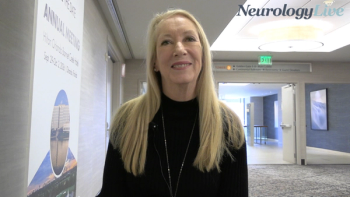
Higher-Dose Pregabalin Reduces Seizure Rate in Pediatric Patients
Pediatric patients with focal-onset seizures experienced significant reductions in their 24-hour seizure rates compared to placebo when administered adjunctive 14 mg/kg per day pregabalin (Lyrica; Pfizer).
When assessed via video electroencephalography (V-EEG), adjunctive
The study (NCT02072824) assessed 2 doses of pregabalin, a 7 mg/kg and a 14 mg/kg dose. This reduction was only observed to be significant with the higher dose compared with placebo. Data were collected by the A0081042 study group, which included Donald Mann, PhD, director, clinical development, Pfizer.
All told, those who were randomized to 14 mg/kg per day pregabalin (n = 28) experienced a 35% reduction (95% CI, —54 to –6) from baseline in their 24-hour seizure rate +1 (loge) compared to placebo (n = 53; P = .022). The 7 mg/kg (n = 59) group, however, experienced a 12% reduction (95% CI, —17 to 52) relative to placebo, which was not significant (P = .461).
The secondary efficacy end point, the difference in 50% responder rates, were not significant for either the pregabalin 14 mg/kg and placebo (odds ratio [OR], 1.6; 95% CI, 0.6—4.1; P = .305) or the pregabalin 7 mg/kg and placebo (OR, 0.6; 95% CI, 0.3—1.4; P = .242). The responder rates for pregabalin 14 mg/kg, pregabalin 7 mg/kg, and placebo were 54% (n = 15), 31% (n = 18), and 42% (n = 22), respectively.
READ MORE:
“Although the optimal goal of epilepsy treatment is the cessation of seizures, or at a minimum significantly reducing seizure frequency, effectively managing seizure rate reduces the associated risks of epilepsy, including medical incidents, injury, and sudden unexpected death,” Mann and colleagues wrote. “The efficacy and safety findings from this randomized clinical trial, therefore, provide evidence of an alternative option in the treatment of pediatric patients with focal-onset seizures.”
Mann et al. also noted that amid the regulatory agency-endorsed notion of the extrapolation of efficacy data of antiseizure medicines for focal-onset seizures in adults to patients aged 4 years and older, these data could be considered in a meta-analysis for such extrapolation. “Discussions are ongoing among the academic community, pharmaceutical industry sponsors of epilepsy studies, and regulatory agencies on the topic of extending extrapolation of adult epilepsy data to children younger than 4 years,” they wrote.
This study included 175 patients, who were randomized in a 2:1:2 fashion to pregabalin 7 mg/kg (n = 71) or 14 mg/kg (n = 34), or placebo (n = 70). The mean age of the cohort was 28.2 months. Respectively, 28, 59, and 53 patients in the 14 mg/kg, 7 mg/kg, and placebo groups were included in the analysis. Patients had their baseline V-EEG 2 days prior to randomization and the 5-day dose escalation period, after which patients were on a fixed-dose for 6 days. Data compared pregabalin with placebo using V-EEG monitoring compared with the final 3 days of double-blind treatment.
The untransformed median change from baseline in 24-hour seizure rate was reduced by 70% (5.4 to 1.4) for the 14 mg/kg group, 16.8% (4.7 to 3.8) for the 7 mg/kg group, and 22.2% (2.9 to 2.3) for the placebo group.
The variation in baseline seizure rates led the investigators to perform a post hoc nonparametric sensitivity analysis, which, in turn, supported the results of the primary analysis. Using ranked ANCOVA, the 14 mg group remained significantly different from placebo (P = .053) while the 7 mg/kg group again failed to achieve significance (P = .515). Similar results were observed when using a Wilcoxon-Mann-Whitney test (P = .026 for pregabalin 14 mg/kg/d; P = .556 for pregabalin 7 mg/kg/d).
As for safety, the most frequently reported treatment‐emergent adverse events (AEs) for the 7 mg/kg and 14 mg/kg groups were somnolence (11.3% and 17.6%, respectively) and upper respiratory tract infection (7% and 11.8%, respectively). For placebo, those rates were 5.7% and 11.4%, respectively. All of the AEs reported were deemed mild to moderate in severity.
REFERENCE
Mann D, Antinew J, Knapp L, et al. Pregabalin adjunctive therapy for focal onset seizures in children 1 month to <4 years of age: A double-blind, placebo-controlled, video electroencephalographic trial. Epilepsia. Published online March 18, 2020. doi: 10.1111/epi.16466.
Newsletter
Keep your finger on the pulse of neurology—subscribe to NeurologyLive for expert interviews, new data, and breakthrough treatment updates.




































